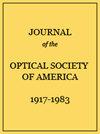Ensemble-statistical approach in the measurement of air-water flow properties in highly unsteady breaking bores.
Journal of the Optical Society of America and Review of Scientific Instruments
Pub Date : 2022-05-01
DOI:10.1063/5.0077774
引用次数: 1
Abstract
Breaking bores are commonly observed in a number of natural processes, often associated with the presence of a transient mixture of air and water, with intense recirculation, air bubble entrainment, and splashing. Two-phase flow measurements in such highly unsteady flows cannot be based on long-duration measurements and require novel ensemble-statistical approaches based on multiple repetitions. Detailed measurements of air-water flow properties were then conducted in a breaking bore with Fr1 = 2.4 using an array of multiple dual-tip phase-detection probes. Based on an extensive experimental program, inclusive of 2000 tests at a single position and 100 tests at multiple elevations, a detailed sensitivity analysis was conducted on the necessary number of repetitions to obtain physically meaningful and statistically reliable air-water flow properties. The results led to a robust methodology to estimate ensemble-statistical values, including confidence intervals and residual error. In addition, these results provided a detailed characterization of the behavior of air-water flow properties in highly unsteady flows, including void fraction, number of interfaces, and bubble chord time/length. Despite the transient nature, all physical processes showed consistent behaviors with theoretical models and other stationary flows, including hydraulic jumps and plunging jets. Overall, this study provided two-phase flow characteristics that go beyond the limitations imposed by the unsteady nature of the flow, proving thoroughly the importance of large datasets for the estimation of air-water flow properties in highly unsteady flows.高非定常破碎孔中空气-水流动特性测量的集合-统计方法。
破孔通常在许多自然过程中观察到,通常与空气和水的短暂混合物的存在有关,具有强烈的再循环,气泡夹带和飞溅。在这种高度不稳定的流动中,两相流的测量不能基于长时间的测量,而需要基于多次重复的新颖的集成统计方法。然后,在Fr1 = 2.4的破孔中,使用多个双尖端相位检测探头阵列进行了空气-水流动特性的详细测量。根据广泛的实验方案,包括在单一位置进行2000次试验和在多个海拔高度进行100次试验,对获得物理上有意义和统计上可靠的空气-水流动特性所需的重复次数进行了详细的灵敏度分析。结果导致了一个稳健的方法来估计集合统计值,包括置信区间和残差。此外,这些结果还提供了高度非定常流动中空气-水流动特性的详细特征,包括空隙率、界面数量和气泡弦长。尽管具有瞬态性质,但所有物理过程都表现出与理论模型和其他静止流动(包括水力跳跃和俯冲射流)一致的行为。总的来说,本研究提供了超越非定常流动限制的两相流动特征,彻底证明了大型数据集对于估计高度非定常流动中空气-水流动特性的重要性。
本文章由计算机程序翻译,如有差异,请以英文原文为准。
求助全文
约1分钟内获得全文
求助全文

 求助内容:
求助内容: 应助结果提醒方式:
应助结果提醒方式:


